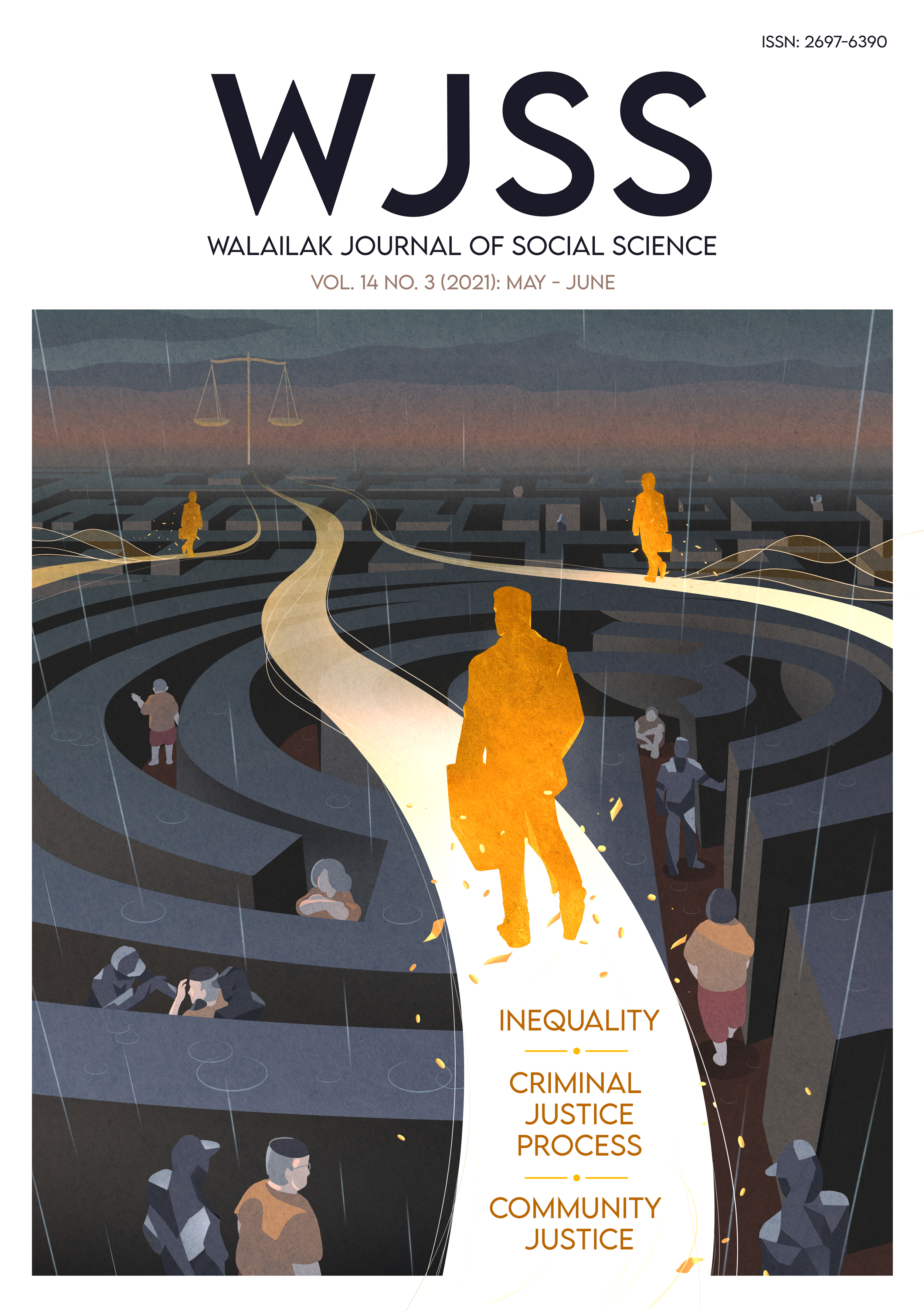The Villain Archetype in Adimora-Ezeigbo’s Trafficked and Roses and Bullets
Main Article Content
Abstract
Employing the archetypal theory, this article uses historicocritical, literary, and descriptive methods to examine the issues associated with women being identified as their own common enemies of progress as depicted in Adimora-Ezeigbo’s Trafficked (2008) and Roses and Bullets (2014). The paper analyses the daunting statures of villain archetypal figures – human-trafficked businesswomen, wicked husband-relation, the stepmother, and the mother-in-law – and the inherent complications such relationships have with minor women who are not equal to the so-called influential status-classified women (control women). It argues that there exist different individual types that characterise the contrastive characters to the point of equilibrium in all human relationships both in real life and in fiction. Furthermore, it demonstrates that in every culture or society where human beings exist there is always the good, the bad, and the ugly people who work for or against the socio-economic growth of humanity. Hence, the article submits that the villain archetype does not make for the progress of the human race, and so women should cut down on the perceived inherent wicked trait in their relationship with others.
Article Details
Copyright: CC BY-NC-ND 4.0
References
Abrams, M.H. (1993).Archetypal criticism in a glossary of literary terms. Fort Worth: HBJ.
Adimora-Ezeigbo, A. (2008). Trafficked. Lagos: Literamed Publications (Nig.) Ltd.
--------. (2014). Roses and Bullets. Ibadan: University Press.
Berke, J.H. (1997).Womb envy. Journal of Melanie Klein and Object Relations, 15(3), 101.
Brown, I.M. (2011). We’re taking back sexy girls bloggers SPARK a movement and create enabling conditions for healthy sexuality. Girlhood Studies, 4(2). 47-69.
Campbell, J. (1993). The hero with a thousand faces. London: Fontana Press.
Cautherin, C. (1996).Writing ritual and cultural unconscious: The great mother archetype in the composition classroom. Journal for the Assembly for Expanded Perspectives on Learning, 1, 58-65.
Cherry, K. (2016). What are the Jungian archetypes? Retrieved from http://www.verywell.com/what-are-jungs-4-major archetypes - 2795439
Coffey, A. L. (2014). Six archetypes in selected novels of Ana Maria Matute Dissertation (Doctoral dissertation). Texas Tech University: A & I, ProQuest.
de Paiva, S., Lima, C. S.,& Giglio, J. (2015). Individuation and feminine soul: Study of feminine archetypal images carried out on surgical patients. Open Journal of Medical Psychology, 4, 99-110.
Dobie, A. B. (2009). Theory into practice: An introduction to literary criticism (pp. 49-109). Wadsworth: Cenage Learning.
Egbung, I. E. (2014). Reinventng the woman, Akachi, Adimora-Ezeigbo’s: The last of the strong ones (pp. 90-101).In Adedun, E. A.,& Nweke, O. B.(Eds.). New perspective on a literary enigma a Festschrift in Honour of Professor Theodora Akachi Adimora-Ezeigbo. Ibadan: University Press.
Ezeigbo, T. A. (1993).The enemy within: Women against women in novels by selected Nigerian female writers. Ihafa-A Journal of African Studies, 1, 7-13.
Foulkes, S.H. (1964). Therapeutic group analysis. New York: International Universities Press.
Frye, N. (2005). Blakes treatment of archetypes II. In Esterhammer, A. (Ed.).Northrop Frye on Milton and Blake. Toronto: University of Toronto Press.
Gordon, R. (1973).Art: Mistress and servant of man and his culture (pp. 14-53). In Field, D., & Newick, J. (Eds.).The Study of Education and Art. London: Routledge Kegan Paul.
Gullman, B. M. (2008).A pure woman archetypally presented: Toward a Jungian of Hardy’s Tess of The d’Urbevilles in Running Head (Master’s thesis). Liberty University.
Jimenez, M. (2012).The girl who was on fire: A study of archetypes and mythology in the hunger games by Suzanne Collins (9th grade). Trinity University, Digital Commons @ Trinity, Understanding by Design: Complete collection.
Jung, C. G. (1959). The basic writings. Violet Staub De Laszlo, New York: The Modern Library Print.
Jung, C. G. (1963). Mysterium coniunctions. Princeton: Princeton University Press.
Koroye, S., & Anyadike, N. (2004). Woman in the academy. Festschrift in honour of Professor Helen Chukwuma. Port Harcourt: Pearl Publishers.
Lacan, J. (1996).The subject (pp. 123-125).In Rice, P., & Waugh, P. (Eds.). The mirror stage as formative of the function of the I as revealed in psychoanalytic experience. London: Arnold.
Muo, A. (2014).Biographical citation and list of publications of Professor Akachi Adimora-Ezeigbo (pp. 380-384). In Emmanuel, A. A., & Onuora, B. N. (Eds.). New Perspectives on a Literary Enigma a Festschrift inHonour of Professor Akachi Adimora-Ezeigbo. Ibadan: University Press.
Neustadt, W. (2010).Designing brand personality using the power of archetypes. Business consultancy international market and sales. Austria: University of Applied Sciences Wiener Neustadt.
Pearson, C. (1986). The hero within: Six archetypes we live by. San Francisco: Harper & Row.
Schermer, V. L. (2016). The complexity of gender. Gender Issues in Group Therapy, 32(1), 57-70.
Souris, I. (2011). The myth of Helen of Troy: Representing the archetypes of the myth in solo and collaborative forms of playwriting (Doctoral dissertation). University of Exeter.
Trans, R.C.F. (1969).The problem of types in poetry: Psychological Types. Bollingen Series. Princeton: Princeton UP
Yakubu, A. M. (2014). Women as their own worst enemies: Rewriting the stepmother and mother-in-law archetypes in Adimora-Ezeigbo’s Roses and Bullets. IOSR Journal of Humanities and Social Science, 19(1), 9-15.
Zhu, J., & Han, L. (2013). Analysis on the personality of Maggi by Jung’s archetype theory. Theory and Practice in Language Studies, 3(2), 324-328.


